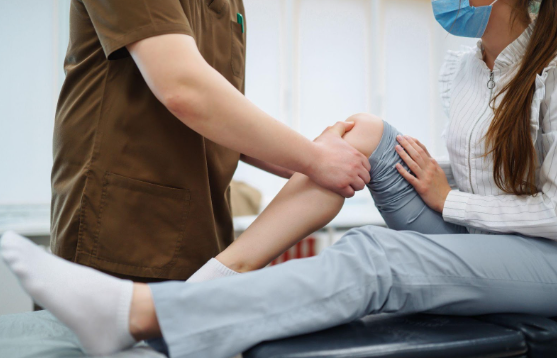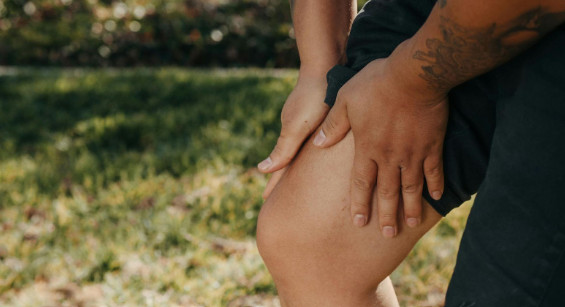Weathering the Cold: Navigating the Impact of Cold Weather on Old Injuries

As winter blankets the world in a chill, many individuals grapple with the effects of cold weather on their physical well-being. The drop in temperature is more than just a seasonal inconvenience; it can impact our bodies, especially for those with pre-existing conditions or old injuries. Old injuries, though seemingly healed, often resurface as sources of discomfort and pain when the mercury plummets.
Continue reading as we investigate the link between cold weather and old injuries, discuss the physiological changes that occur, and provide practical strategies to help those affected.
The Physiology of Cold Weather and Its Effects on the Body
When the temperature drops, our bodies constrict blood vessels near the skin's surface to conserve heat. This natural reaction can lead to muscle tension and stiffness, impacting joint flexibility and overall physical comfort.
Decreased blood flow in cold weather is a double-edged sword. While it helps preserve body heat, it also means that muscles receive less oxygen and nutrients, leading to increased fatigue and a heightened susceptibility to injuries.
Cold weather often exacerbates pre-existing stiffness, making it particularly challenging for individuals with old injuries. Joints lose their usual range of motion and movements become more arduous, causing discomfort and, in some cases, pain.
Old Injuries: A Persistent Challenge
Old injuries vary widely, but certain types tend to be more susceptible to the whims of cold weather. The cold can awaken dormant discomfort, whether it's a past fracture, ligament sprain, or muscle strain.
Scar tissue, a common remnant of healed injuries, may become less pliable in the cold. This can lead to increased tension around the injury site, contributing to the overall pain sensation.
Inflammation, a natural response to injury, can intensify in the cold. Cold weather prompts blood vessels to constrict, potentially trapping inflammatory substances in the affected area and causing heightened discomfort for individuals with old injuries.
Coping Mechanisms for Cold Weather and Old Injuries
Wearing layered clothing is essential for retaining body heat and insulating against the cold. Prioritize thermal materials such as wool and invest in high-quality outerwear to effectively shield yourself from low temperatures. Ensure your joints and muscles stay warm by incorporating compression garments or braces into your winter attire.
To prevent stiffness, engage in regular, gentle exercises or stretches, and consider using hot packs or enjoying warm baths to alleviate pain and enhance circulation. Supporting your overall health through adequate hydration and a balanced diet is crucial for injury recovery.
In addition to physical care, incorporate mindfulness techniques like deep breathing or meditation into your routine to effectively manage pain and reduce stress. By combining these strategies, you can navigate cold weather more comfortably and safeguard against the risk of exacerbating old injuries.
Injury Management through Lifestyle & Dietary Considerations
Engaging in regular, gentle exercises is crucial to keeping joints limber and muscles supple. It's essential to tailor warm-up exercises and stretching routines to cater to the specific needs of individuals with pre-existing injuries.
Incorporating gentle stretches into your routine not only enhances flexibility but also reduces the risk of injury in colder temperatures. Heat therapy emerges as a valuable ally in combating discomfort induced by the cold. Applying heat to affected areas promotes improved blood circulation, reduces stiffness, and provides relief from the discomfort associated with old injuries.
Emphasizing prevention, the first line of defense lies in proper clothing. Layering up, especially over old injury sites, acts as a shield against the biting cold, helping to mitigate the impact on pre-existing conditions.
Diet also plays an important role in managing the impact of cold weather on old injuries.
Anti-inflammatory foods, such as fatty fish, berries, and leafy greens, can help mitigate inflammation and promote joint health. Incorporating foods rich in anti-inflammatory properties, such as turmeric and ginger, can aid in injury recovery. These natural ingredients possess healing qualities that complement the body's efforts to repair and recover.
Staying hydrated is often overlooked during colder months but remains important for overall health and injury management. Proper hydration supports joint lubrication and helps flush out toxins, providing a more comfortable experience for individuals with old injuries.
Lifestyle Adjustments and Self-Care Practices
Stress can amplify the impact of cold weather on old injuries. Incorporating stress management techniques, such as meditation or deep breathing exercises, can prevent unnecessary tension in muscles and joints, providing relief for individuals navigating the challenges of cold weather.
Quality sleep is a potent ally in the battle against cold-induced discomfort. A well-rested body is better equipped to manage pain and inflammation, promoting overall recovery. Adequate sleep becomes particularly important for those with old injuries as they strive to maintain optimal health during the colder months.
Low-impact exercises like swimming or cycling offer an excellent way to maintain mobility without straining old injuries. These activities promote circulation, reduce stiffness, and contribute to overall well-being, even in the coldest weather.
Seeking Professional Help: Physical Therapy and Rehabilitation
Professional guidance is invaluable, especially when dealing with old injuries during cold weather. Consulting with a physical therapist provides personalized advice and targeted exercises to address specific concerns, empowering individuals to manage their conditions effectively. Physical therapists tailor rehabilitation exercises to suit the unique challenges of cold weather. These exercises focus on enhancing flexibility, strengthening muscles around old injuries, and minimizing discomfort, offering a proactive approach to managing pain in challenging climates. Massage therapy can be a game-changer for individuals with old injuries. It helps improve blood flow, reduce muscle tension, and alleviate pain associated with cold weather. Professional interventions, whether through chiropractic care or acupuncture, can complement conventional treatments, providing a comprehensive approach to injury management.
If you or someone you know is struggling with cold-induced pain from old injuries, consider reaching out to
Pain Treatment Centers of America. Our
dedicated team of professionals is committed to providing personalized and effective solutions to help you regain control over your life and leave the discomfort of old injuries behind.
Contact us for more information. Remember, you don't have to weather the cold and the pain alone—help is just a click away.













